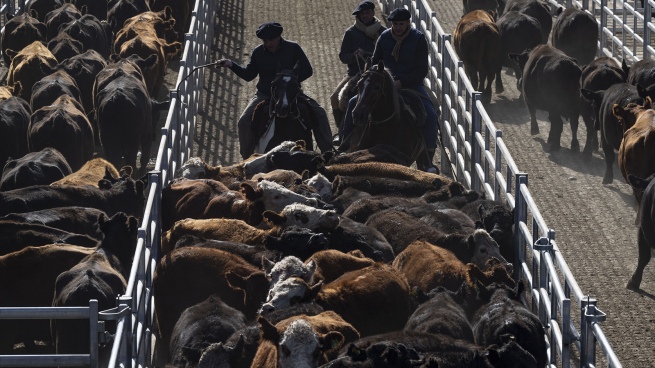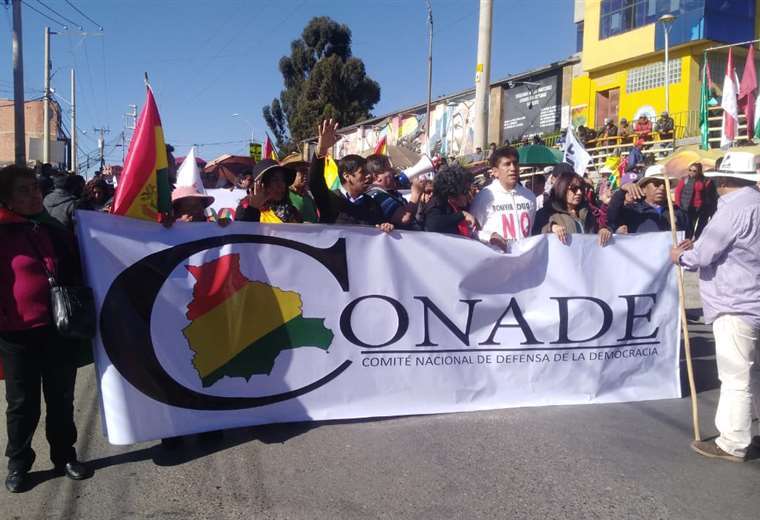After 122 years of presence in Liniers, the Agricultural Market celebrated its second month in Cañuelas and both managers and workers were optimistic about its present and future.
In the brand new market, the modern and the traditional come together in the 110 hectares occupied by the new headquarters located 60 kilometers from the City of Buenos Aires and which required an investment of US$ 25 million.
The road was not easy. Liniers had numerous moving projects since the 1970s, with projects that contemplated the possibility of moving the market to Mercedes, Chascomús, San Vicente or Lujan, among other locations.
But finally came what Juan Santillán, a member of the board of the Agricultural Market (MAG) described as the “ultimatum”: the application of Law 622 of the Buenos Aires Legislature -approved in 2001 and extended 16 times- that prohibits the entry of livestock on foot to the City.
“The 45 consignees had bought a field in San Vicente but they changed the zoning and it was no longer possible to make a market. So, we desperately went out looking for a place, we agreed with the developers and they offered us a field in Cañuelas,” Santillán told Télam about the property whose construction began in 2019 and that, due to a pandemic and after numerous pilot tests at the beginning of this year , opened last May 18.
Similar to an industrial assembly line, the cattle circulate through a central open-air street, and from there they are taken to the reception pens.
After going through the health control and being classified and weighed, the animals are taken to one of the two large parallel wings of the market that make up 41,000 square meters between both and whose roofs, prepared for the installation of solar panels, allow the reuse of rainwater for washing trucks and pens through a system of pipes and an underground cistern.
Finally, once the typical auctions that take place in the 750 sales corrals have been carried out, the cattle, already sold, are once again loaded into cage trucks for refrigerators, slaughterhouses and supermarkets as the closing of the primary sales cycle.
“It is working well with the adaptation problems that a move from a place where people have been working for more than 100 years produces, but we are overcoming them day by day,” explained Santillán, who is also president of the Argentine Chamber of Livestock Shippers.
If there is a point where the MAG operators coincide it is the ease that the property gives to logistics by being located in a neuralgic point, at kilometer 86 of Provincial Route 6 and meters from the Ezeiza-Cañuelas highway, in addition to the agility that the shorter distances that cattle must walk around the premises.
“It’s much simpler. Sellers and refrigerators used to have to enter the City of Buenos Aires, do 50 more kilometers, and they lost four hours between round trip“, Santillán remarked to Télam.
With an average of 10,000 heads sold per day -far from the 25,000 that Liniers knew how to operate in its best times-, the director of the market stressed that it is “full” and that in the next two months, after the construction of a remaining sales sector, the “optimal capacity of the MAG will become 12,000 animals.”
“The idea is that in the future, when we stabilize the finances of the investments we have made a little, we can expand it by 4,000 more heads since there is room for another sales module”, he commented and was confident that “there will be offer to cover all the pens”.
Among other ideas in outline is the possibility that a sheep market be added to the cattle; the construction of a compost plant, in addition to obtaining the sanitary certification so that the refrigerators can buy farms in the Market and then export them to countries included in the Hilton Quota, among other initiatives.
To do this, the directors point out that one of the points contemplated in the construction of the market was to improve animal welfare, through the construction of curved piers and metal pens, instead of the wood that was used in Liniers.
Despite the modern ceilings, the 2,750 meters of footbridges that fly over the corrals and the glazed offices and in view of the consignees, in the agricultural and livestock market there is an atmosphere of familiarity among the workers, most of whom already worked in Liniers and found continuity in Cañuelas.
“Here the important thing is to be able to continue having the source of labor. It was a totally positive change,” Angel, one of the many horse-mounted operators who are in charge of ordering the transit of cattle, told Télam.
“My children were born in the market and since they were little they began to come. There are fifth generations here and luckily they continue to say ‘good morning’, ‘good afternoon’ and ‘excuse me,'” Angel said.
After which, he joked: “Of Liniers it is strange that it was a more traditional thing, here it is more ‘Yankee’, more modern, which seems good to me because everything is going forward”.
Santillán, for his part, although he acknowledged that some workers “the change took a bit”stressed that everything is a “question of adapting”.
“Although there were many who were initially reluctant and negative, they are beginning to understand the modernity of this market and how it makes their work easier,” he described.
Héctor Pérez, owner of the consignee Tito Pérez e Hijos SA, has been a property buyer for 40 years and, in the same vein as Santillán, said that, although there are still “correctable things” such as, for example, in the dimensions of the pens; “Cañuelas allows greater operability”.
“Everything is closer and together. Most are good things. Such a market could not be within Capital because it was not logical,” said Pérez.
Although the main objective was to ensure the continuity of operations, the market will soon have an Agro-commercial Pole in a sector of the land sold to a group of developers, which will house commercial and logistics companies related to the activity, a hotel and a sector of exhibitions of the Argentine Association of AnGus.
It will cover 80 of the 110 hectares and will have 111 lots from 2,000 to 6,000 square meters.
“The Livestock Market will have banks, shops, businesses, a housing neighborhood where workers will be prioritized and, added to the hotel and the service station, which is quite advanced, it will give more life to the property,” Santillán concluded. realize the magnitude of the enterprise.








